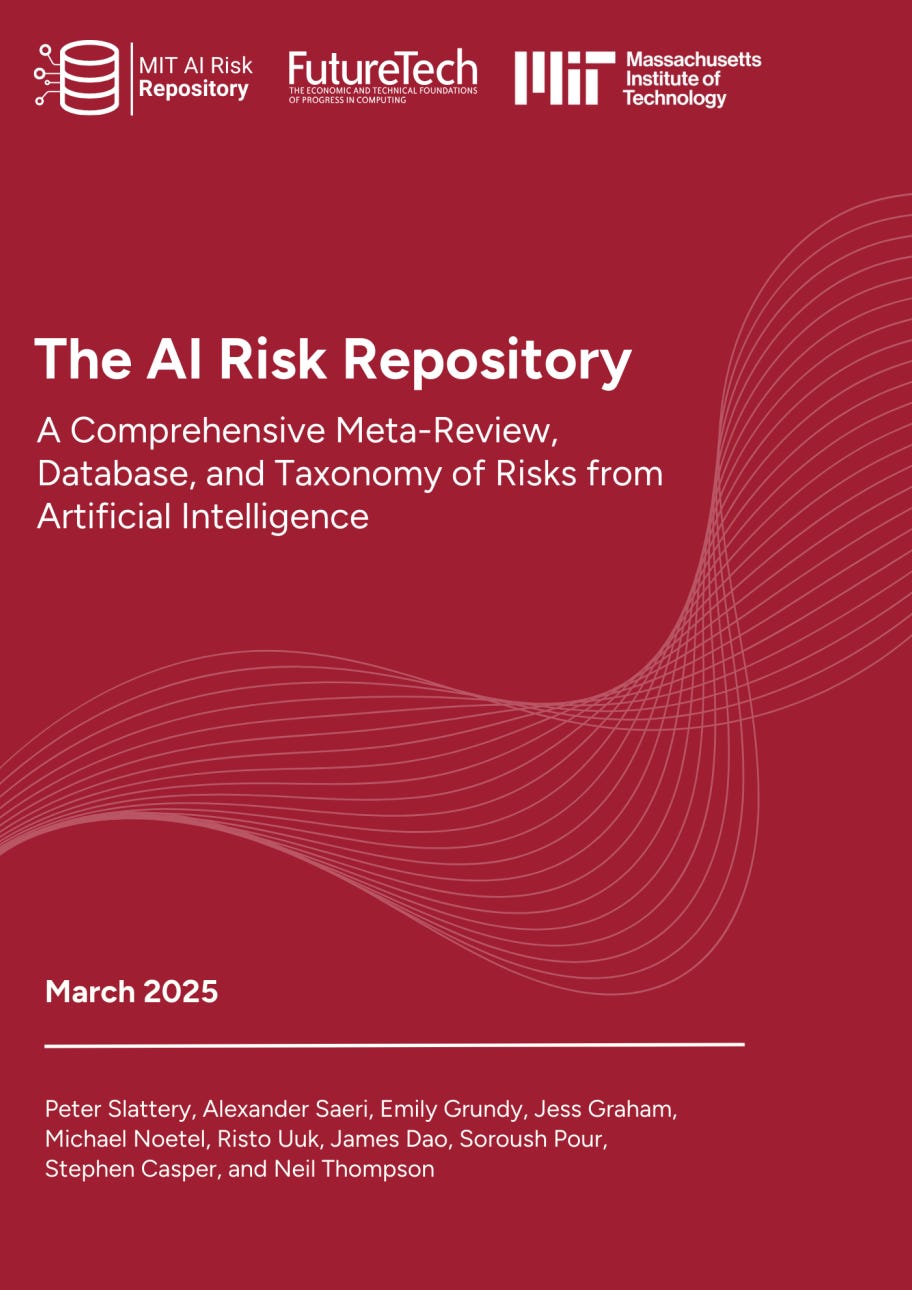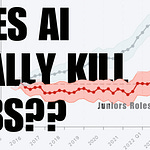Let me get this straight. You surveyed executives about whether they understood something, and 56% said yes, without knowing their AI literacy.
Shocking. Next, you'll tell me 73% of men think they're above-average drivers.
EY asked C-suite executives to self-rate their AI expertise. The same executives who just discovered ChatGPT can write their emails now believe they're qualified to assess existential risk.
Some good news.
Most people are clueless. Finish this article, and you'll understand what 90% of them don't. Not because you're special. Because the bar is that low.
Even better news?
You don’t need to be tech-savvy (nor business-savvy) to read this. This is intended for anyone and everyone who interacts with AI.
MIT’s AI Risk Repository
Most AI policies die as PDFs. Not this one.
MIT’s risk repository isn’t another PDF.
This is a live database of 1,612 documented AI failures, updated weekly. Think of it as your early warning system.
Instead of arguing hypotheticals, you can check what has already been observed in literature, how it showed up, and then it’s up to you to deal with the risk that exists.
Even if it isn’t complete, it is far more complete than what most executives or teams are using. It gives you a common language to classify and reason about the risks.
I spent the week in the guts of it, so you don’t have to. We’ll talk through it like adults who ship features, services, or even content and art, responsibly.
I will walk you through:
Some key findings via this AI risk repository.
who or what caused the harm,
whether it was intentional or accidental, and
when it shows up, before release or after deployment.
More importantly, you’ll learn how to use MIT’s live repository so you can pick the one domain that could sink you, shortlist five risks that would be seen as costly, and find a convincing story to get attention from your team/ board/ client.
Shall we?
Listen to this episode with a 7-day free trial
Subscribe to 2nd Order Thinkers to listen to this post and get 7 days of free access to the full post archives.












